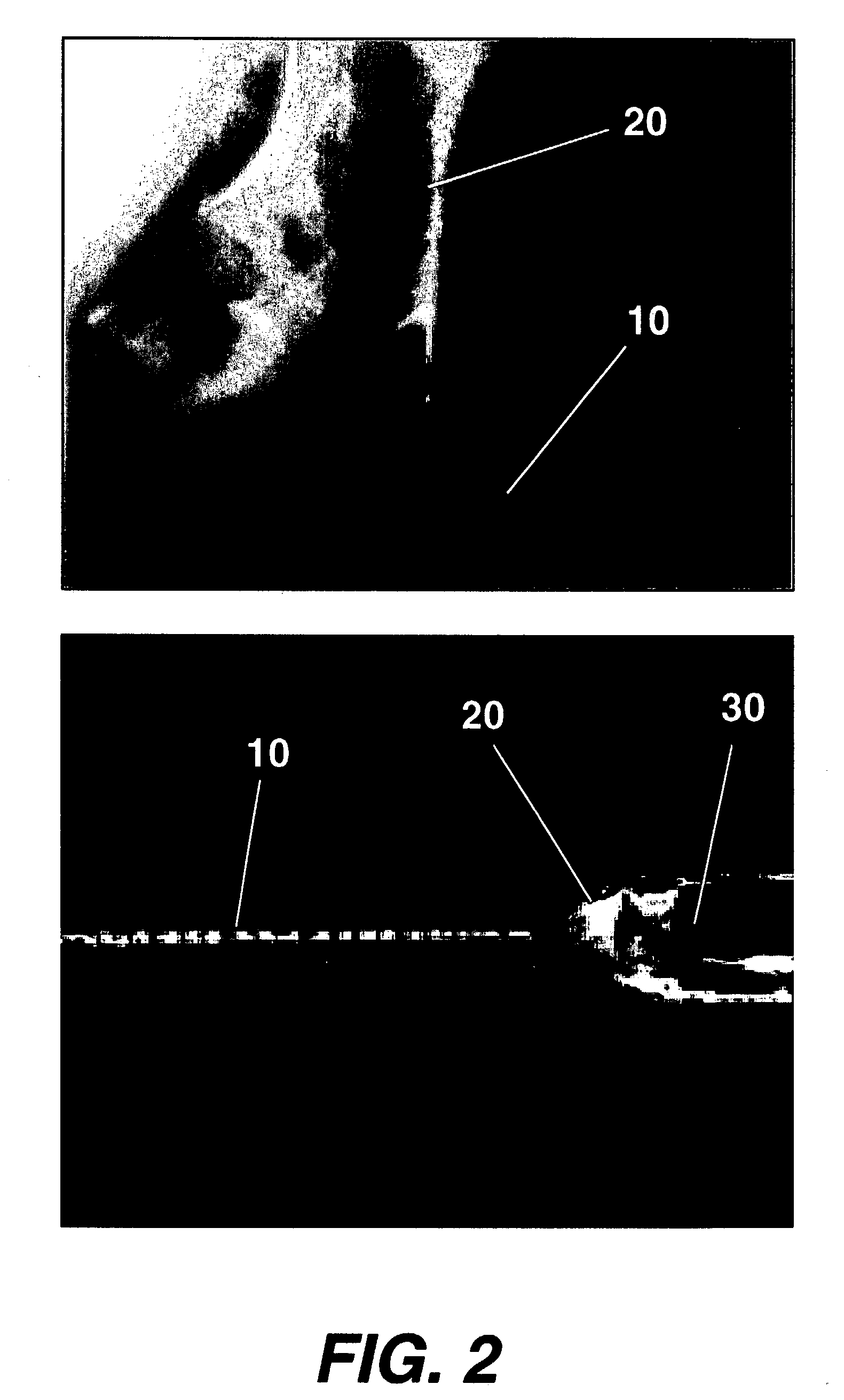Method for stromal corneal repair and refractive alteration
a stromal corneal and refractive alteration technology, applied in the direction of prosthesis, electric/magnetic/electromagnetic heating, peptide/protein ingredients, etc., can solve the most common source of vision loss, corneal eye damage, and eye damag
- Summary
- Abstract
- Description
- Claims
- Application Information
AI Technical Summary
Problems solved by technology
Method used
Image
Examples
Embodiment Construction
. 1 TO 7
[0030] FIG. 1 illustrates in detail human corneal stromal collagen fibrils obtained by scanning electron microscopy. A preferred electrospray operation is illustrated in FIG. 2. An electrospray needle 30. The needle 30 supports a Taylor Cone 20 as a result of the electric field between the source needle 30 and an oppositely charged target or electrode. If the needle 30 were connected to a positive terminal 80 of a suitable high voltage supply 70, then the target 50 would be the negative terminal 90. The resulting polymer jet 10 is produced at the apex of the Taylor Cone, and the jet 10 is attracted to and accelerates toward, the target 50 electrode. The solvent evaporates during the flight from the source needle 30 to the target 50, leaving behind a solid collagen fiber. The distance between the source needle 30 and the target 50 may be reduced significantly if the electrospinning is performed in a bath of co-current or counter current gas flow, which serves to increase the ...
PUM
| Property | Measurement | Unit |
|---|---|---|
| voltage | aaaaa | aaaaa |
| voltage | aaaaa | aaaaa |
| diameter | aaaaa | aaaaa |
Abstract
Description
Claims
Application Information
 Login to View More
Login to View More - R&D
- Intellectual Property
- Life Sciences
- Materials
- Tech Scout
- Unparalleled Data Quality
- Higher Quality Content
- 60% Fewer Hallucinations
Browse by: Latest US Patents, China's latest patents, Technical Efficacy Thesaurus, Application Domain, Technology Topic, Popular Technical Reports.
© 2025 PatSnap. All rights reserved.Legal|Privacy policy|Modern Slavery Act Transparency Statement|Sitemap|About US| Contact US: help@patsnap.com



